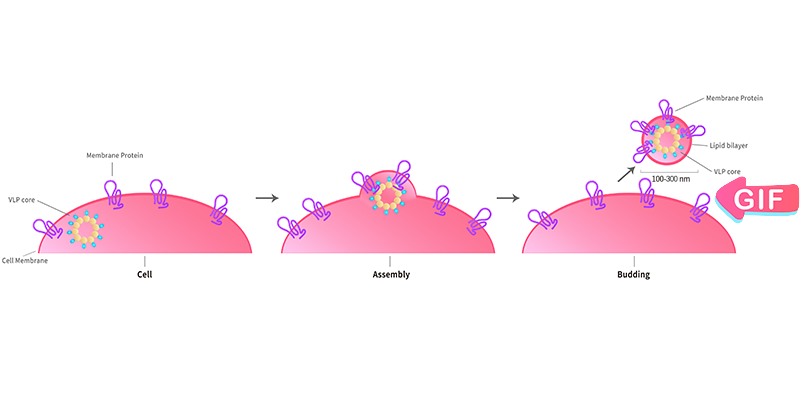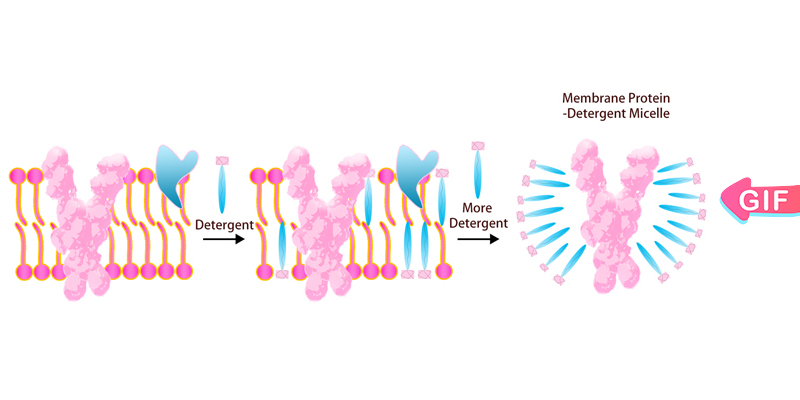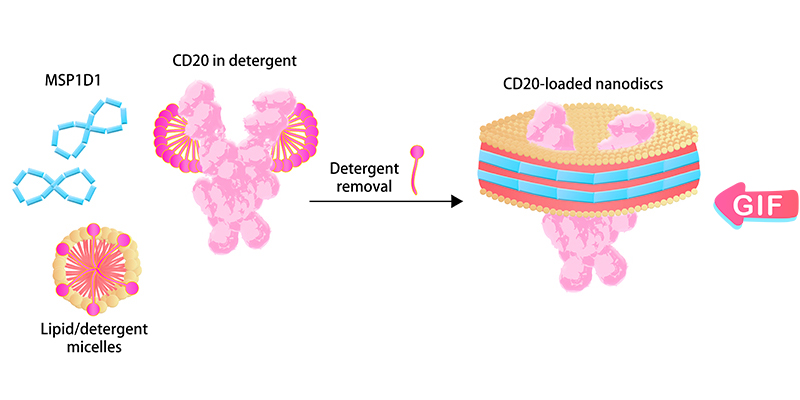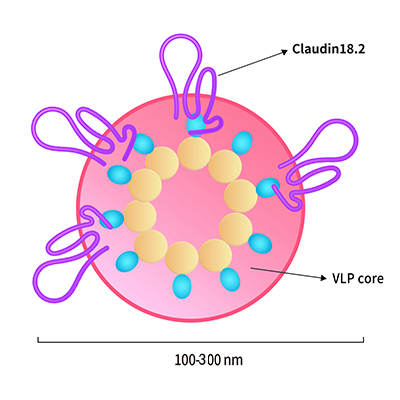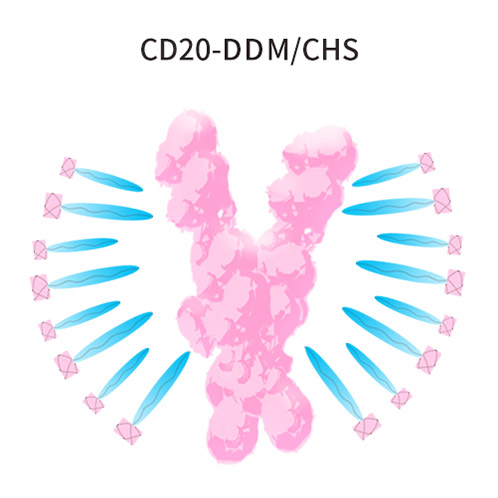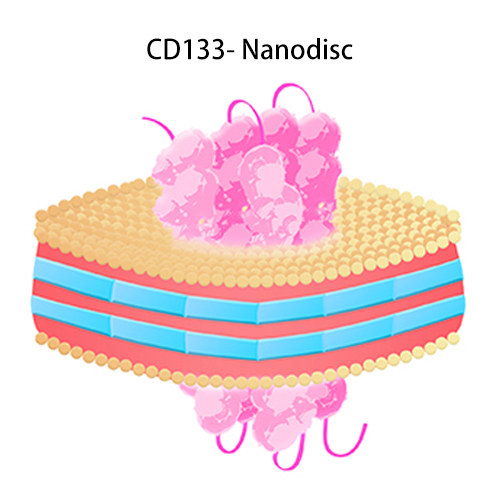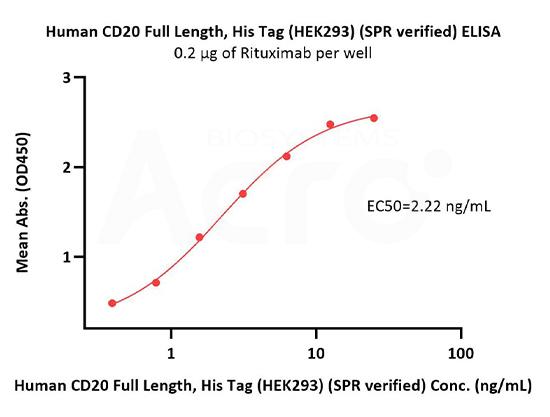



























 Limited Edition Golden Llama is here! Check out how you can get one.
Limited Edition Golden Llama is here! Check out how you can get one.  Limited Edition Golden Llama is here! Check out how you can get one.
Limited Edition Golden Llama is here! Check out how you can get one.
 Offering SPR-BLI Services - Proteins provided for free!
Offering SPR-BLI Services - Proteins provided for free!  Offering SPR-BLI Services - Proteins provided for free!
Offering SPR-BLI Services - Proteins provided for free!
 Here come GMP Grade Cytokines!Free Sample is available!
Here come GMP Grade Cytokines!Free Sample is available!  Here come GMP Grade Cytokines!Free Sample is available!
Here come GMP Grade Cytokines!Free Sample is available!
> 다중 막관통 타깃 단백질 개발 기술 플랫폼

ACROBiosystems는 HEK293 발현 시스템에 기반한 VLP 기술 플랫폼을 특별히 구축했으며, 이 플랫폼은 세포 표면에 완전한 형태의 막 단백질을 직접 응집하고 이러한 복잡한 막 단백질을 항체 면역화 및 스크리닝을 위한 가용성 고농도 단백질로 전환합니다. 준비된 외피 VLP는 고유한 세포막에 올바르게 접힌 다중 막관통 단백질을 표시하여 타깃의 자연적 형태를 인식하는 기능적 항체를 유도하고 스크리닝할 수 있습니다.
ACROBiosystems는VLP 기술 플랫폼에서 일상적으로 생산되는 다중 막관통 단백질을 제공할 뿐만 아니라 맞춤형 서비스도 제공합니다.
다중 막관통 단백질의 막관통 구역은 소수성이 높아 일반 완충기에서는 정확한 형태를 유지하기 어려운데 이러한 문제는 세제를 첨가하면 해결할 수 있습니다. ACROBiosystems는 곤충 세포 발현 기술과 포유류 세포 발현 기술을 바탕으로 난해한 약물 타깃 막관통 단백질에 대한 발현 플랫폼 및 정제 플랫폼을 특별히 구축했으며, DDM/CHS(Cat. No. DC-11) 등 일반적으로 사용되는 세제를 선별해 왔으며 다중 막관통 단백질의 수용성을 크게 증가시키고 용액에서 자연스럽고 올바른 형태를 형성하는 데 도움이 되였습니다.
"Nanodisc"의 인지질층 구조는 MSP(membrane scaffold protein)와 인지질 분자로 구성된 인지질 이중막 구조로, 막관통 단백질은 세제를 제거한 후 Nanodisc의 특수한 구조에 통합될 수 있으며 생물학적 활성을 유지하여 좋은 수용성이 있어서 더 널리 사용됩니다.
ACROBiosystems의 연구 개발팀은 지속적인 최적화 개선을 거쳐 산업화된 scale-up 생산에 적합한 Nanodisc 조립 공정을 성공적으로 탐색하여 막관통 단백질 Nanodisc의 장기적이고 안정적인 공급을 실현했습니다.
VLP
막 단백질-세제
Nanodisc
| 분자 | 제품 번호 | 제품 설명 | 적용 시나리오 | 주문/예매 |
|---|
| 분자 | 제품 번호 | 제품 설명 | 적용 시나리오 | 주문/예매 |
|---|
| 분자 | 제품 번호 | 제품 설명 | 적용 시나리오 | 주문/예매 |
|---|
아래의 ELISA&SPR 데이터는 내부 실험 조작법 참고용으로 무료로 제공되며, Protocol을 클릭하시면 받아 보실 수 있습니다.
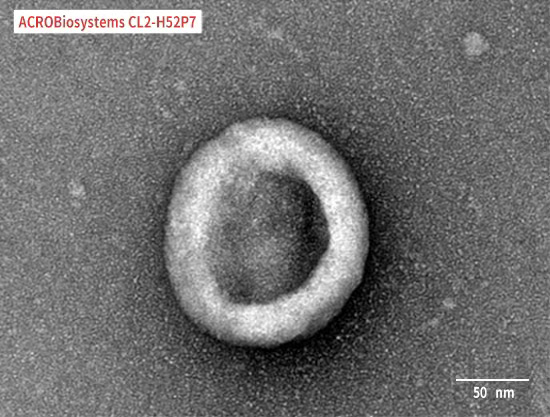
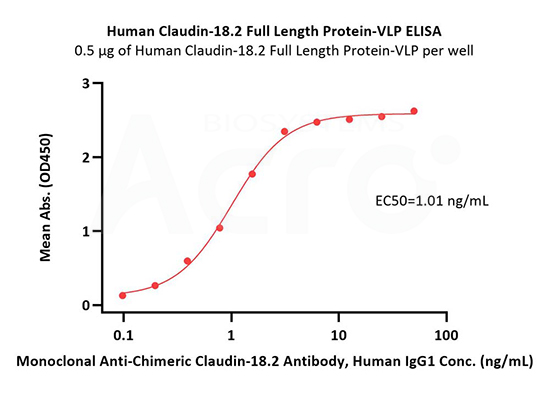
Immobilized Human Claudin-18.2 Full Length Protein-VLP (Cat. No. CL2-H52P7) at 5 μg/mL (100 μL/well) can bind Monoclonal Anti-Chimeric Claudin-18.2 Antibody, Human IgG1 with a linear range of 0.2-3 ng/mL (QC tested).
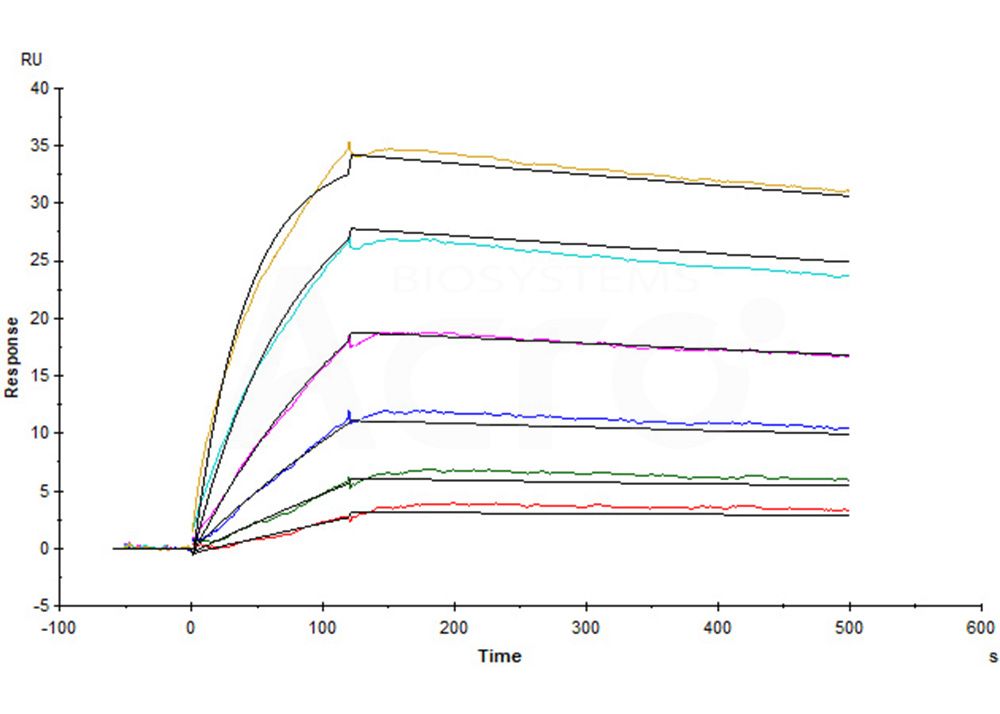
Human Claudin-18.2 Full Length Protein-VLP (Cat. No. CL2-H52P7) captured on CM5 Chip via Anti-Claudin-18.2 antibody can bind Anti-Claudin-18.2 antibody with an affinity constant of 0.374 nM as determined in a SPR assay (Biacore T200) (Routinely tested).
FACS로 검증됩니다. Claudin18.2-CAR-293 세포에 Human Claudin18.2-VLP 단백질(Cat. No. CL2-HF218)과 음성 대조군 단백질(Cat. No. VLP-NF2P4)을 각각 형질감염시켰다. Claudin18.2-VLP 단백질(Cat. No. CL2-HF218)은 Claudin18.2-CAR-293 세포에 특이적으로 결합할 수 있음을 보여주었습니다.
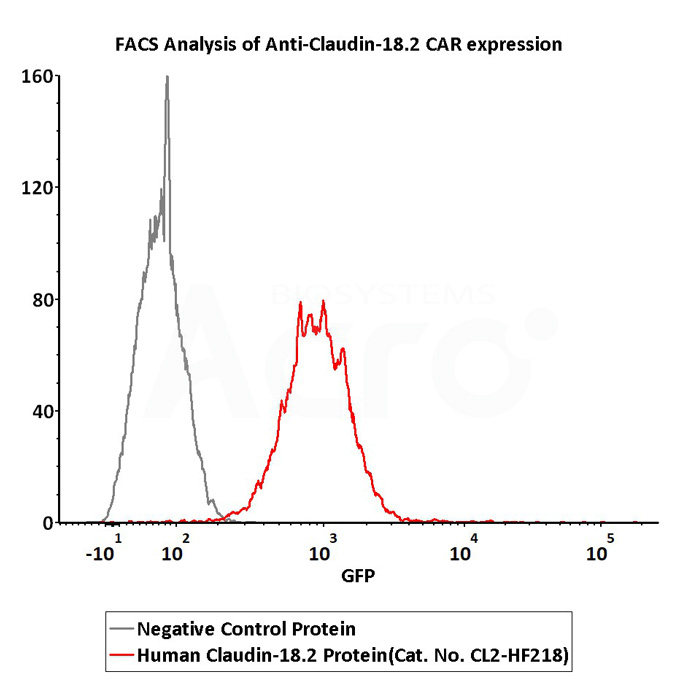
2e5 of Anti-Claudin-18.2 CAR-293 cells were stained with 100 μL of 3 μg/mL of Fluorescent Human Claudin-18.2 Full Length Protein-VLP (Cat. No.CL2-HF218) and negative control protein respectively, FITC signals was used to evaluate the binding activity (QC tested).
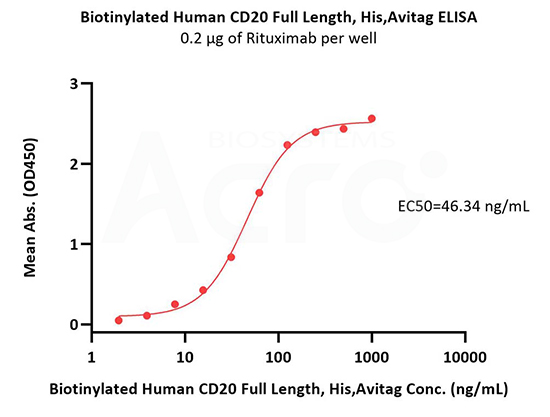
Immobilized Rituximab at 2 μg/mL (100 μL/well) can bind Biotinylated Human CD20 Full Length, His,Avitag (Cat. No. CD0-H82E5) with a linear range of 4-63 ng/mL (in presence of DDM and CHS) (QC tested).
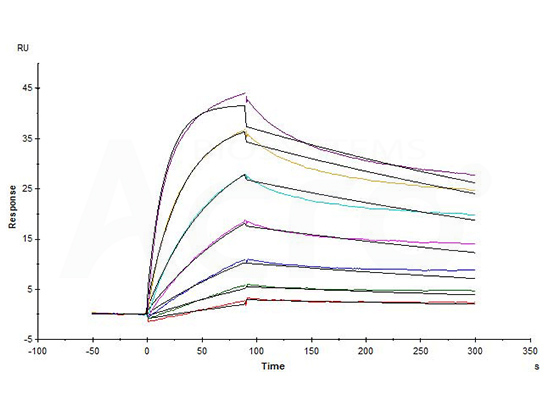
Biotinylated Human CD20 Full Length, His,Avitag (Cat. No. CD0-H82E5) captured on Biotin CAP-Series S Sensor Chip can bind Rituximab with an affinity constant of 1.73 nM as determined in a SPR assay (in presence of DDM and CHS) (Biacore T200) (QC tested).
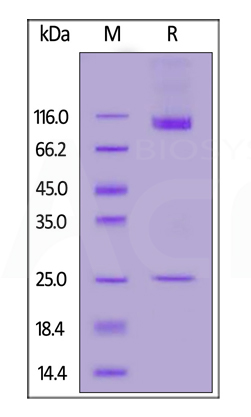
Human CD133 Full Length, His Tag (Nanodisc) (Cat. No. CD3-H52H1) on SDS-PAGE under reducing (R) condition. The gel was stained overnight with Coomassie Blue. The purity of the protein is greater than 90%.
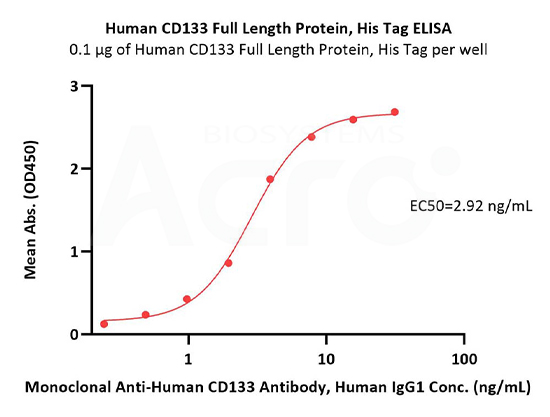
Immobilized Human CD133 Full Length Protein, His Tag (Cat. No. CD3-H52H1) at 1 μg/mL (100 μL/well) can bind Monoclonal Anti-Human CD133 Antibody, Human IgG1 with a linear range of 0.2-4 ng/mL (QC tested).

Our Claudin18.2 has been developed with VLP and DMM/CHS platforms. Both of these versions are suitable for immunization and screening. However, the VLP version may be preferred for improved immunogenicity. For accurate affinity measurements, we recommend using the DDM/CHS version (the detergent version).
Multi-pass transmembrane proteins span the cell membrane multiple times forming multiple extracellular domains. For example, Claudin18.2, CD20, and CD133 have two extracellular loops (ECLs) with each ECL having specific functions and interactions with each other. Full length can ensure that the protein conformation is biologically relevant while enabling the ECL to be completely exposed for improved screening of ideal antibodies. As the figure below illustrates, the full length is active and relevant compared to isolated extracellular domain. It is not the case that ACRO always emphasizes full length proteins, but drug discovery R&D work needs the full-length multi-pass transmembrane proteins. Indeed, when compared, the activity of only the ECL region is worse than that of the full-length protein. ACRO is committed to providing the high quality and relevant products that meet customers' needs.

The influence of non-specific antibodies cannot be ignored. Using membrane proteins under the VLP and Nanodisc platforms may produce non-specific antibodies. Both of our platforms have corresponding isotype controls for reverse-screening and excluding non-specific antibodies. Membrane protein-VLP has an isotype control product (Cat. No. VLP-NF2P4). Membrane protein-Nanodisc has two isotype control products, one of which is MSP1D1(Cat. No. APO-H51H3) as the isotype control for tag free version. If a biotinylated membrane protein-Nanodisc is used, MSP1D1(Cat. No. APO-H81Q5) can be used as the isotype control.

Nanodisc-membrane proteins are quite different from detergent stabilized membrane proteins. First of all, in principle, Nanodisc-membrane protein are assembled on native membrane-like structures and are completely detergent free. This opens up applications like immunization use for Nanodisc assembled proteins otherwise restricted due to detergent dissolving native cell membrane and causing damage to cells. In addition, the Nanodisc version of membrane proteins are compatible with cell-based assays and CAR expression detections. The Nanodisc platform used by ACRO has been authorized by the patent holder and can be used with confidence during the development process.
Claudin18.2-VLP is tested and verified by anti-Claudin18.2 specific antibodies. The purity is evaluated by SDS-PAGE/HPLC/DLS/SEM. The conventional negative dye EM cannot see whether Claudin18.2 is on the VLP due to its low resolution. Binding activity with anti-Claudin18.2 specific antibodies can confirm the presence of Claudin18.2 on the particles.
We currently store all VLP formulated products as liquids at -70°C and ship on dry ice. We do store non- enveloped VLP products by freeze-drying. VLP immunization mainly requires attention to the choice of adjuvant dose, because VLP itself can enhance immunogenicity, which is not the case for conventional protein products.
CD24 and PD-1 are soluble proteins. They are not multi-pass transmembrane proteins, so non-enveloped VLPs are used. While multi-transmembrane proteins have hydrophobic transmembrane regions and need to be embedded on the membrane of the enveloped VLPs. The difference between VLP and enveloped VLP is whether there is a phospholipid bilayer membrane on the surface of the VLP.
If customized, the membrane protein in VLP format is expected to take 6-8 weeks. The DDM/CHS version requires expression and purification conditions optimization of the target multi-pass transmembrane protein and detergent screening, so the development cycle is longer lasting more than 8 weeks. The customized Nanodisc version of membrane protein requires an additional 4 weeks on top of the DDM/CHS development time.
Authors: Lionel Rougé et al.
Journal: Science
Authors: Paige M. Glumac , Aaron M. LeBeau.
Journal: Glumac and LeBeau Clin Trans Med
Authors: Kenji Maeda, Debananda Das et al.
Journal: Journal of Biological Chemistry
Authors: Line Barington, Pia C. Rummel, et al.
Journal: Journal of Biological Chemistry
This web search service is supported by Google Inc.








